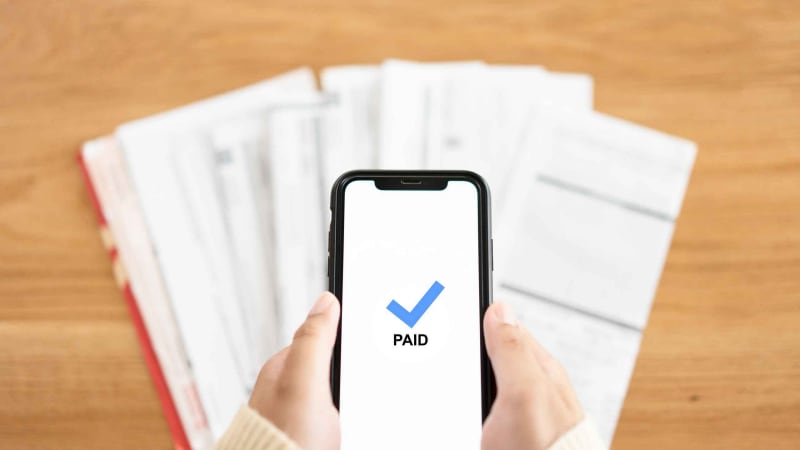Can you overdraft a credit card?

Quick insights
- Overdrafting a credit card—or exceeding your card’s credit limit—is possible, but it can come with consequences, such as an over-limit fee for each billing cycle that your balance is over the limit.
- Understanding what a credit card overdraft is and how it works can help you manage your credit effectively.
- Knowing the implications of going over the limit, including potential fees and impacts on your credit score, is crucial for responsible credit card usage.
Credit cards can be a useful tool to help manage your finances and earn rewards on everyday purchases. Credit cards come with their own credit limit that is set by the lender based on a number of factors. But is it possible to spend more than that limit, and what happens if you do?
Overdrafting on a credit card is when you go over the card’s credit limit. Though the term overdrafting is reserved for deposit accounts such as checking or savings accounts, it can sometimes be used to describe when you go over the limit on a credit card.
Defining an overdraft
An overdraft is when you overdraw a checking account and it is defined in regulations related to your checking/deposit account.
Over-limit fees and increased interest rates may be imposed by your credit card issuer or bank when you exceed your credit limit. Increased interest rates can mean a high penalty APR, which can apply indefinitely, making your debt more expensive to repay. These charges can happen when you spend beyond your credit limit by even a small amount, which could result in a penalty APR or over-limit fee.
Consequences of going over your credit limit
Going over your credit limit can come with many consequences, including:
- Over-limit fees: If your credit card issuer allows you to go over your credit limit, you may be charged an over-limit fee. This is a fee for spending beyond your credit limit, and it can add to your debt and increase your balance.
- Penalty Annual Percentage Rate (APR): Going over your credit limit can also lead to a higher interest rate, known as a penalty APR. This is a higher rate that applies when you violate the terms of your credit card agreement, such as by going over your limit or making late payments.
- Credit utilization ratio impact: Going over the limit of your card can negatively impact your credit utilization, which is the percentage of your available credit that you're using compared to your total available credit. The credit utilization ratio is an important element in the calculation of your credit score, and it is typically observed that maintaining it below 30% is considered beneficial.
Impact of overdraft on your credit score
Going over the credit limit on a credit card can have a significant impact on your credit score. Let's explore the different ways this can happen and how you can mitigate these effects:
- High credit utilization: As previously mentioned, going over your limit can lead to high credit utilization, which can potentially lower your credit score. For instance, if your limit is $3,000 and you've spent $3,500, your credit utilization ratio would be 117%. A credit utilization ratio over 30% can potentially impact your credit score, as it may signal to lenders that you're at risk of overspending or not managing your credit well.
- Late payments: A high balance from going over the limit can lead to late payments, potentially damaging your credit score. For example, a single 30-day late payment can significantly lower your credit score.
- Repeated overdrafts: Frequently going over the limit can signal to lenders that you're high-risk, potentially affecting future credit. A lender may hesitate to approve a loan for someone who often exceeds their credit limit.
While going over the limit can negatively impact your credit score, there are effective strategies to counteract this. In the following section, we'll delve into how avoiding going over the limit, making timely payments and maintaining a low credit utilization ratio can help improve your credit score.
How to avoid credit card overdrafts
Regularly monitor your credit card balance and stay aware of your credit limit. This can help you plan your spending and avoid accidentally going over your limit. One way of doing this is by setting up alerts with your credit card issuer to notify you when you're nearing your limit. These credit card alerts can serve as a reminder to check your balance and adjust your spending as needed.
Making regular payments can also assist with keeping your balance below your credit limit. This helps keep your credit utilization low and can potentially help avoid costly interest charges.
If you frequently come close to hitting your card’s credit limit, consider asking your issuer for a credit limit increase. This can give you more spending power and help lower your credit utilization, but it's important to continue managing your spending responsibly. If a higher credit limit causes you to spend more, this higher limit might actually do more harm than good. Note: Asking for a credit limit increase does not guarantee you will receive one.
The bottom line
Understanding credit card limits and consequences of exceeding those limits can help you use your credit card responsibly. Managing your credit limit wisely is a key part of maintaining good credit health and financial stability. Regularly reviewing your card statement, making timely payments and using your credit card’s features effectively can help prevent going over the limit.



